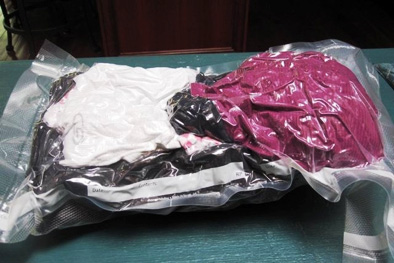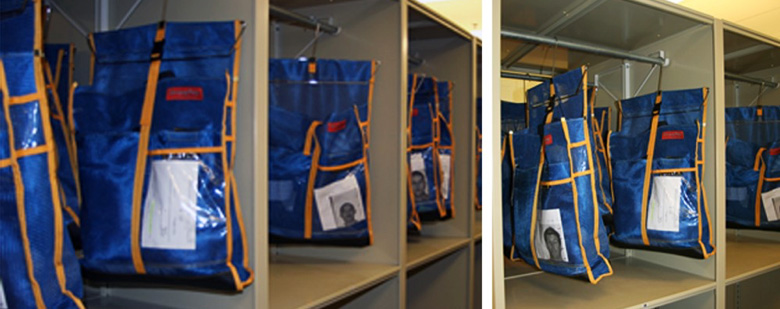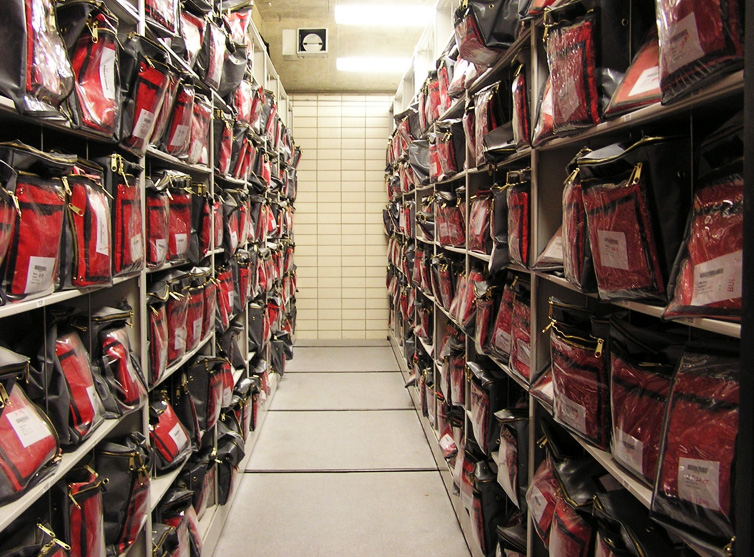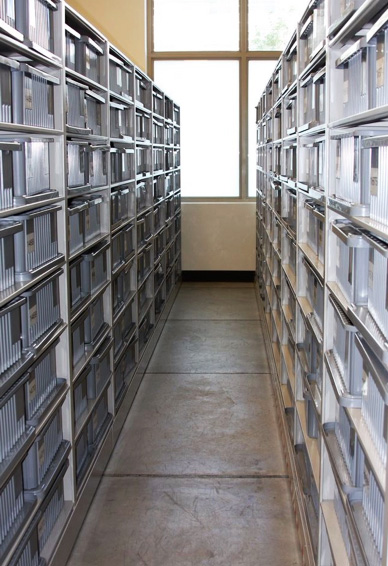CHALLENGER INSIGHTS Vol. 27:
Inmate Property Containers

Spacesaver Group Sales reps should be a resource for jail staff as they evaluate their options for inmate property containers. After all, the containers are what determine the storage and retrieval system that will be used.
The emphasis on Inmate Property Containers was evident at the 2016 American Jail Association conference: there were six container vendors at the 2016 American Jail Association versus just two storage system vendors. Jail administrators are looking for help managing inmate property, and our knowledge can be an advantage for them.
Let’s get familiar with the types of inmate property containers and advantages and challenges of each.
 Vacuum Seal Bags
Vacuum Seal Bags
Pros: Significant space savings, relative uniformity of size, reduction of items being taken from the bag, and reduction of odors in the inmate property storage room. This solution is increasing in popularity.
Cons: The costs of the bags, the equipment to seal the bags, and maintenance required on the systems can be prohibitive.
Tips: These bags still need a system of organization. Best practices for vacuum seal bags are to place a piece of cardboard inside the bag, then place a copy of the inmate property record facing out of the bag. Place the shoes, clothes and items on the opposite side of the cardboard. The property record may include a photo of the inmate as well as the inmate number for identification of the property.
The sealed bags may be stored on a shelf opening to fit the bag size. Bin dividers or file dividers can be used to hold the bags upright to make storage, identification and retrieval easier.
 Hanging Inmate Property Bags
Hanging Inmate Property Bags
Pros: Some jails may like these bags, especially because they include an integrated pouch for the inmate property record. Some of these bags also have an area for securing valuable items and jewelry.
 Cons: Items tend to bunch at the bottom and it is difficult to gain density of storage for hanging bags. In the photos, you can see the wasted space above and below the bags.
Cons: Items tend to bunch at the bottom and it is difficult to gain density of storage for hanging bags. In the photos, you can see the wasted space above and below the bags.
Tips: If the jail had a conveyor system, they may have hanging bags, and they may not have the money to procure an entire new set of containers. An advantage the Spacesaver rep provides is that a 4-post shelving system designed to handle hanging bags may be converted to open shelf storage of other containers in the future.
 Inmate Property Bags on an Open Shelf
Inmate Property Bags on an Open Shelf
(“Property Box” by Pacific Concepts at Dallas Jail)
Pros: The inmate property box by Pacific Concepts has a clear window for adding the inmate property record and a visible identification number to aid in storage and retrieval. The bags are a uniform size to optimize shelf density and they pack down making storage in transit much less expensive than hard containers. The bags are also reusable, which helps justify cost.
Cons: While the fabric is breathable to help reduce mold, it won’t reduce the odors in the property room.
 Plastic Bins for inmate property
Plastic Bins for inmate property
Pros: Plastic bins are a popular choice for many jails because they offer a standard size for maximizing shelf density and can be numbered to aid in storage and retrieval. Bins can also be reused and cleaned.
Cons: Bins can be prone to mold, and the lids don’t seal in the odors. Another challenge raised with bins is the ease of making the plastic into a weapon.
Overall best practices in inmate property storage:
- Learn how property is going to be collected. Is the inmate placing the property into the container or is the staff? Where are the containers staged prior to collecting the property?
- How will the container be identified? Is the container number entered into the jail management software? What is the backup if the property is not properly recorded? Does the container have a way of identifying the individual to whom it belongs?
- What accountability does the jail have of the property? Is an inventory list made of the items belonging to the inmate? Does the container have a means to control access either through tamper proof or zip tie with identification number?
Understanding the pros and cons of different inmate property containers is another way you can be a great resource when you sell into the corrections market. Have you seen other containers used than those mentioned here? What solutions did you create? Share your ideas with McKenna Dustman at mdustman@spacesaver.com.